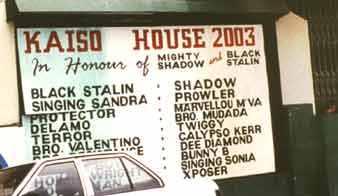 |
 |
Lyrics
Calypso or kaiso emerges in the early part of the twentieth century,
when singers produced social commentary in the newly hegemonic English language, albeit with
a Trinidadian twist. The beginnings of public singing and entertainment in Trinidad have been
linked by scholars to stickfighting and Carnival, popular practices amongst the slaves of
African descent before and after full Emancipation in 1838. The basic tunes of calypso,
numbering from a dozen to fifty depending on the cataloguer, are constantly recycled, whereas
the lyrics - humorous, satirical, lewd, full of fatigue (sharp teasing) - form the original
component of the song. Two significant strands of the calypso are social-political commentary
and discussion of man-woman relationships. Mobilizing India focusses on the representation of
East Indians in calypso (Chapter 4).
Chutney-soca, another musical genre dealt with in the book (Chapter 3), is known for its
outrageousness and irreverence. Like much of Trinidadian music, this form too makes liberal
use of double entendre. Musician Mungal Patasar says that the wedding and childbirth lyrics
come from the songs of the hijras (eunuchs) who in India would have sung on these occasions.
These songs later came to be known as chutneys. An important populariser of chutney was
Sundar Popo, one of the early singers to use a good deal of Trinidadian English along with
some Hindi. We see the suggestive connection made by singers between cooking/eating and
sexuality. Humour and sexual explicitness are two key components of chutney as well as
calypso. |
|
Lyricists' names are provided wherever available. |
| |
|
|
|

